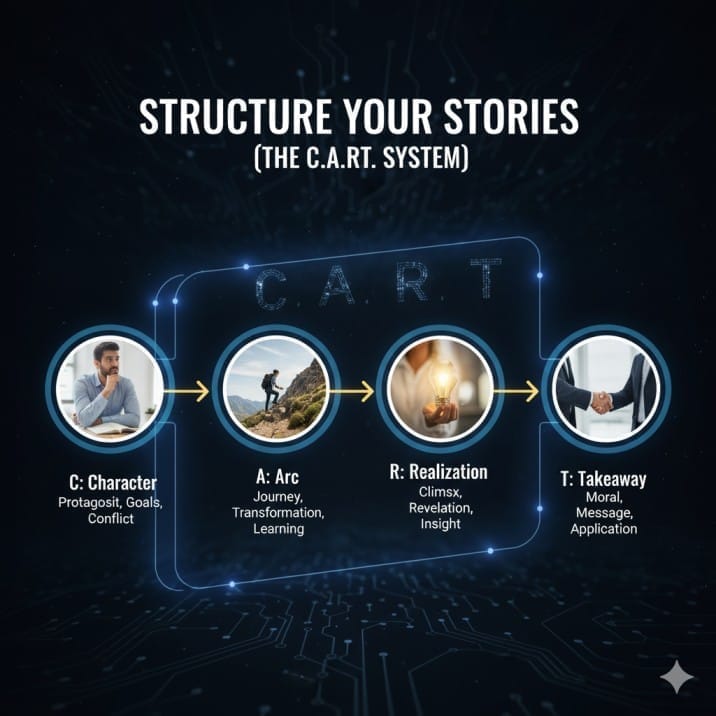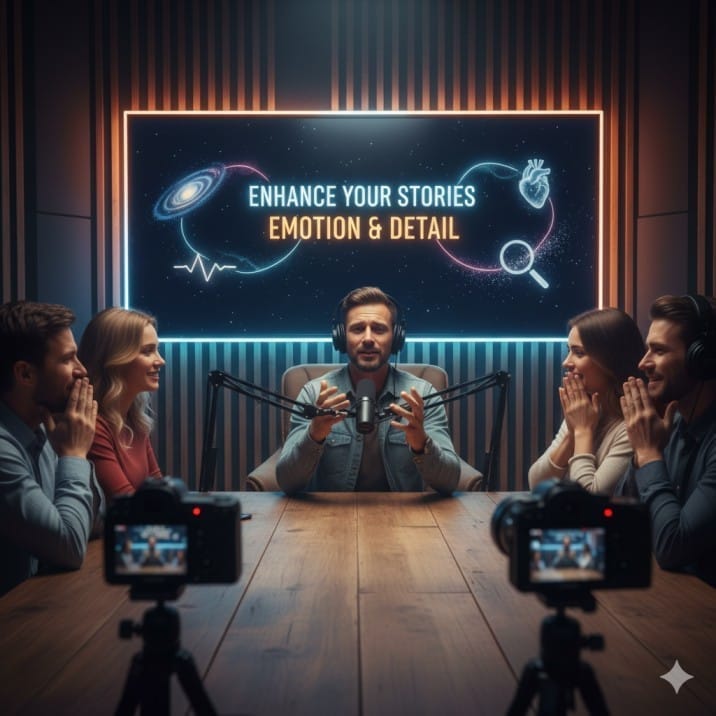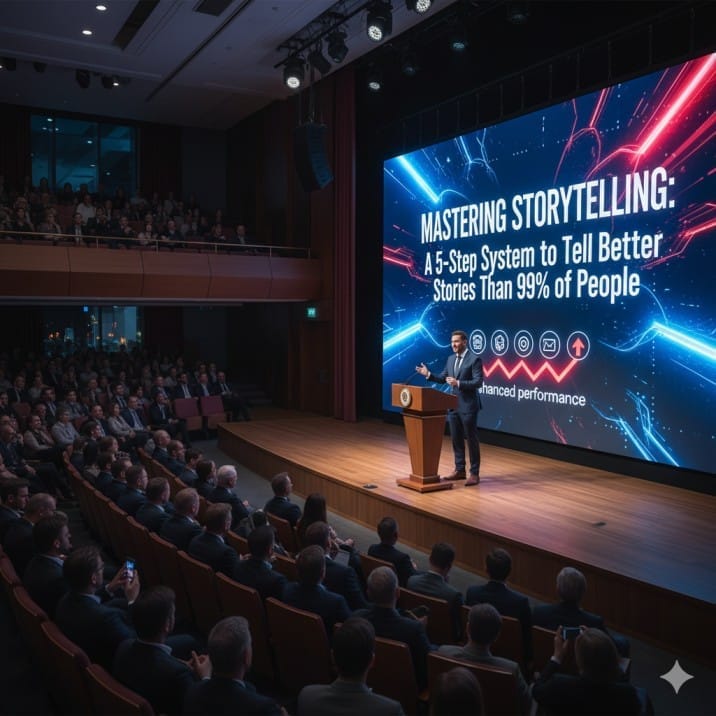
Mastering Storytelling: A 5-Step System to Tell Better Stories Than 99% of People
Lesson#2: Mastering Storytelling: A 5-Step System to Tell Better Stories Than 99% of People — Presented by Alexander Lyon
Click play to begin your next lesson. Learn how to capture attention, spark emotion, and craft stories that truly connect.
Step 1: Structure Your Stories (The C.A.R.T. System)
Most people struggle to tell good stories because they ramble or skip key details. The C.A.R.T. system offers a simple, four-step structure for telling short, powerful stories — ideal for conversations, presentations, and social media.
C.A.R.T. stands for:
C – Context
A – Adversity
R – Resolution
T – Takeaway
✅ Here’s how it works:
1. Context: Set the scene quickly.
“It was October 2023 when I went for a walk through Central Park. I wanted to take photos for my mom’s birthday.”
2. Adversity: Introduce a challenge or conflict.
“When I reached into my pocket, I realized my phone was gone — and with it, hundreds of photos I’d taken for her.”


Step 2: Enhance Your Stories with Emotion and Detail
Even a simple story can become unforgettable with the right delivery. Use these three storytelling enhancement techniques to make your stories more engaging:
1. Raise Questions
Create curiosity that keeps your audience hooked.
“I was just leaving the park when I realized something terrible…”
2. Share the Thoughts
Let your audience hear your inner monologue — it builds empathy.
“My heart dropped. Weeks of photos — gone. My mom would be so disappointed.”
Step 3: Find Your Stories (Build a Story Library)
The best storytellers always have stories ready to tell. The secret? They collect them.
🔹 Try the “First, Best, Last, Worst” Exercise
Draw a simple table with columns for prompts like gift, travel, or job. Under each, write your first, last, best, and worst memory related to that topic.
Example:
Gift → First: chainsaw (age 3), Best: trip to Spain, Worst: peppermill (30th birthday).
You’ll quickly uncover story-worthy memories you’d long forgotten.
🔹 Start “Homework for Life”
At the end of each day, ask:
“If I had to tell a story from today, what would it be?”
Write down just one short sentence.
“August 6 — ran 9 km pain-free after a month of recovery.”
Do this daily, and you’ll have at least 52 great stories every year.


Step 4: Practice Stories the Right Way
Practice doesn’t mean memorizing every word. It means rehearsing naturally.
Here’s how:
Speak Aloud: Practice your stories out loud — not in your head.
Use an Imaginary Audience: Look around the room and make eye contact with objects as if they were people.
Get Feedback: Ask friends or even tutors to listen and tell you where they felt engaged — or bored.
Don’t aim for perfection. Aim for comfort. When you’ve practiced enough, you’ll sound natural, not rehearsed.
Step 5: Tell Stories in Everyday Life
You don’t need a stage or a script to be a storyteller. Start with small moments.
Instead of replying, “I’m fine” when someone asks, “How are you?”, try this:
“I’m great, actually! This morning, after two weeks on the road, I finally sat on my couch, made a coffee, and just… relaxed. It felt amazing.”
That’s storytelling in action — short, real, and relatable.
At first, it might feel awkward. But with time, it becomes second nature — and you’ll notice your conversations becoming deeper and more meaningful.

Final Thoughts: Becoming a Great Storyteller
Storytelling isn’t about having the biggest adventures — it’s about turning everyday moments into extraordinary stories that move and inspire people.
Enroll for the Full Course
Mastering Storytelling: A 5-Step System to Tell Better Stories Than 99% of People.
This part is just a glimpse of what’s inside the full course. If you’re ready to take your storytelling to the next level — to connect deeply, inspire action, and communicate ideas that truly stick — then it’s time to enroll in the full “Mastering Storytelling” course.

Get in touch with our expert team today — we’re just a call or WhatsApp away!




|
Naomi Venter
Meet. Create. Grow.
|




|
Samuel J. V. Vuuren
Meet. Create. Grow.
|




|
Nelly Agboola
Meet. Create. Grow.
|




|
Zurica Mitchley
Meet. Create. Grow.
|
GET IN TOUCH
Contact Us
Contact Us
Book your viewing today and discover more in person.
Open Hours
Mon-Fri: 9 AM – 6 PM
Saturday: 9 AM – 4 PM
Sunday: Closed
Contacts
267 Oak Avenue, Ferndale, Johannesburg, South Africa.
Email: team@synchub.space
Visit Us
SyncHub Co-working Space
267 Oak Avenue, Ferndale, Johannesburg, South Africa






